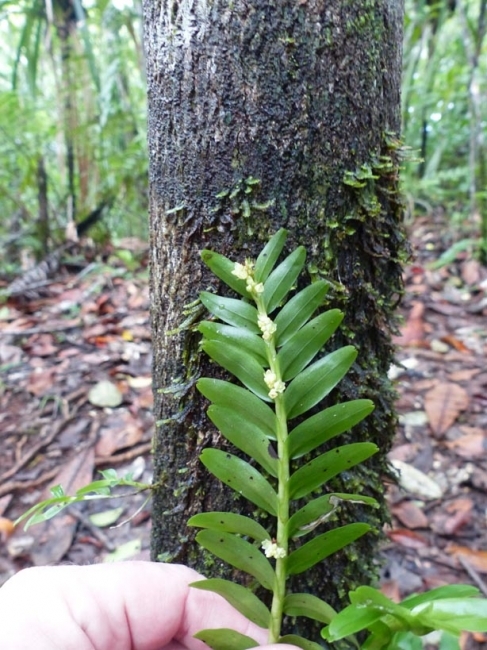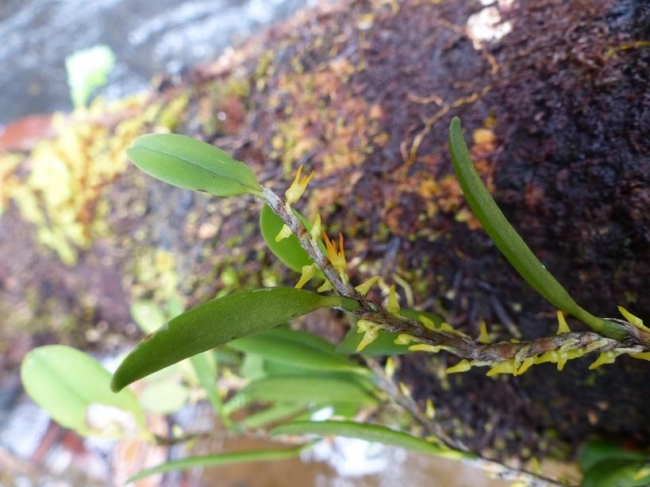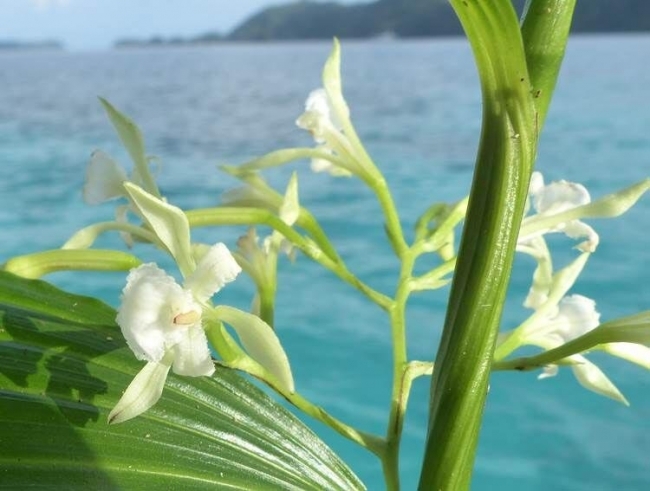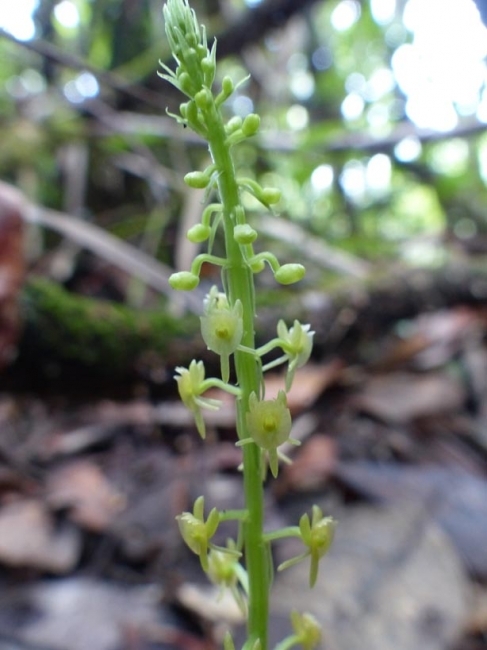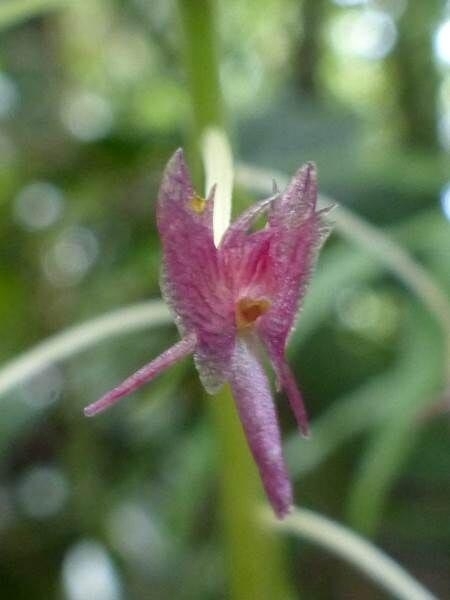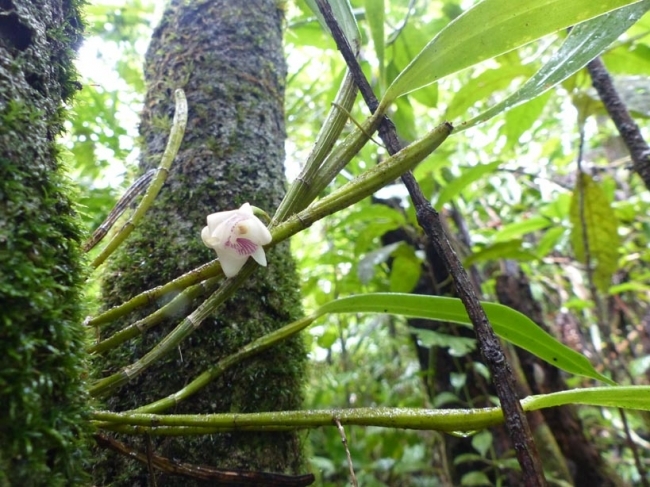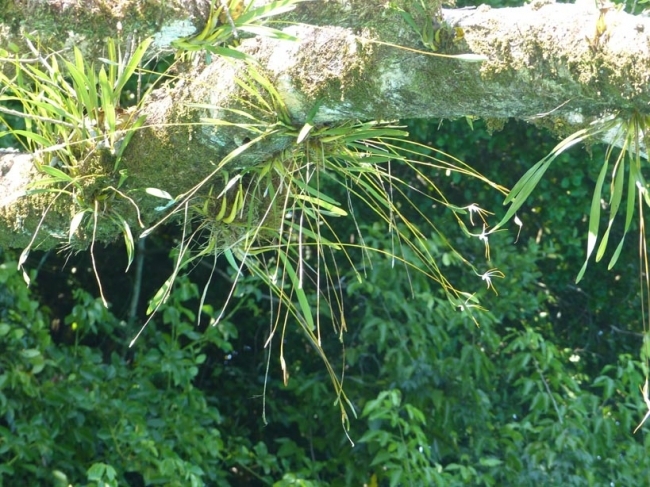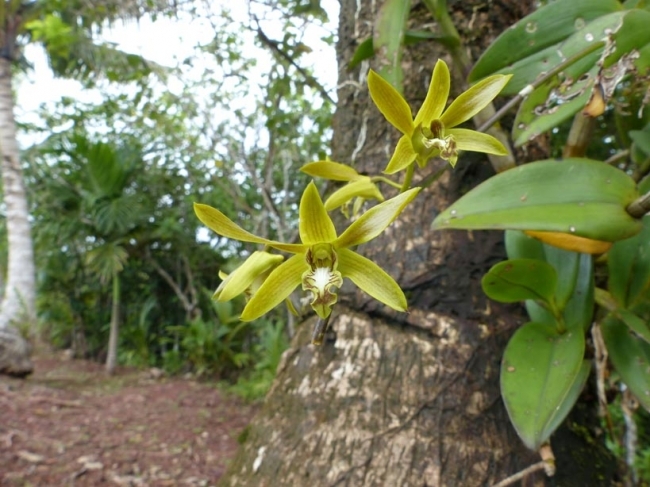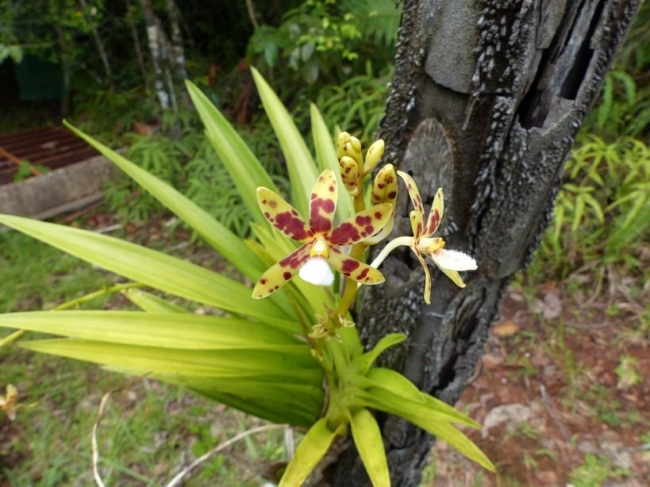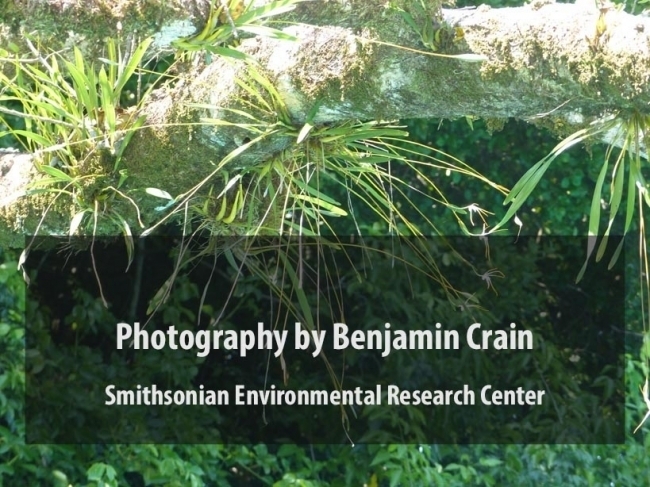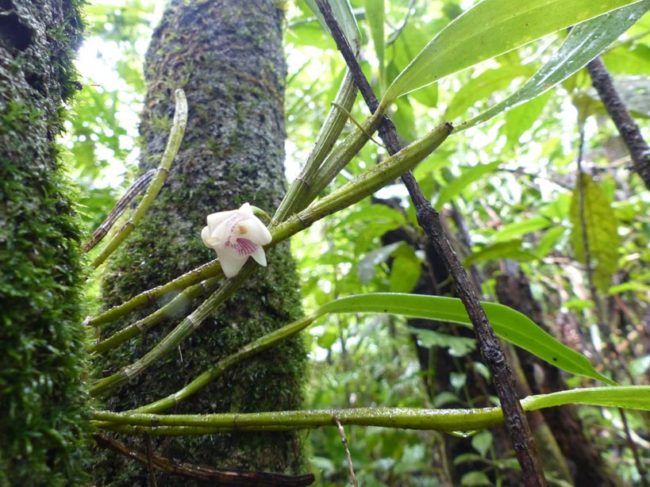
Smithsonian NAOCC partners in orchid conservation project in Palau
Orchid Conservation is happening in all kinds of unexpected places. Get out your world maps and see if you can find Babeldaob!
This is the time of the year we might be dreaming of a tropical getaway. I have my World Atlas out right now, trying to locate the Republic of Palau. I’m not looking for the kind of fantasy vacation that the once popular Lifestyles of the Rich and Famous would consider. Palau is popularly known as a dive destination, and even saw battles during World War II. Rather, our interest today is in Palau’s botanical treasures and its potential for conservation research.
In case your World Atlas is not near at hand, the Republic of Palau is an island chain located within the Pacific region of Micronesia. Babeldaob is not only the largest Palauan Island, it also holds the largest intact area of native tropical lowland rainforest in the entire Pacific, as well as the most diverse forests in Micronesia. For this reason, Palau represents a valuable ecological setting for botanical studies, and already has a well-established history of botanical research.
Within Babeldaob is found the Ngardok Nature Reserve, a 6.1 square kilometer protected area that covers a large range of diverse environments consisting of denuded badlands, open savanna, young secondary forests and older secondary forests.
OK, orchid enthusiasts, this is the part where you are supposed to wake up.
This preserve is the site of a new orchid conservation research project by the Smithsonian’s North American Orchid Conservation Center. Apparently the Smithsonian is expanding its orchid studies to include not only North America. We may soon see an Orchid-Gami for a Palauan species like those the NAOCC has developed for our North American species. The Palauan archipelago is small, only 535 square kilometers of land area, but is home to an estimated 730 native plants and 135 endemic species. It is considered to have the most intact natural forests in the Western Pacific and is home to some 70 native orchid species, 30 of which are endemic.
Why would the North American Orchid Conservation Center be involved in a place so far away (and not North America)? Good question. It turns out that this nature reserve has a unique research area established in 2014, called a “permanent forest dynamics monitoring plot”. The area is currently four hectares in size, or 10 acres, where all plants with stems that are > 1cm in diameter are identified, tagged, mapped, and followed over time.
Much has been documented about the plants in this plot, but little is yet known about the aspects of the ecosystem relative to the orchids found there. This orchid research project will piggy-back on a world-wide project already in place in over 60 locations, and will add much new data on orchids.
From the NAOCC brochure:
The structure of orchid communities, their biology and distribution across Palau, basic information on their co-occurrence with specific tree species, soils or sites, vegetation types, or environments is largely unknown. Given that the Orchidaceae is the most diverse family of flowering plants on earth, the unique role that epiphytes generally and orchids specifically play in forest ecosystems, the charismatic nature and high public appeal of orchids, and the apparent sensitivity of orchids to global change, there is a need to understand the biology, ecology and restoration of orchids and their associated fungi in support of conservation efforts.
The Palau project is a natural fit for the NAOCC. NAOCC personnel are based in the Smithsonian Environmental Research Center, which oversees their own Forest Dynamics Plot at their Edgewater, Maryland laboratory. Edgewater is adjacent to a sub-estuary of the Chesapeake Bay on the US coastal plain. Their Plot links in with the larger network called The Center for Tropical Forest Science – Forest Global Earth Observatory (CTFS-ForestGEO).
According to the CTFS-ForestGEO website tells us that it is
“… a global network of forest research plots and scientists dedicated to the study of tropical and temperate forest function and diversity. The multi-institutional network comprises over 60 forest research plots across the Americas, Africa, Asia, and Europe, with a strong focus on tropical regions. CTFS-ForestGEO monitors the growth and survival of approximately 6 million trees and 10,000 species.”
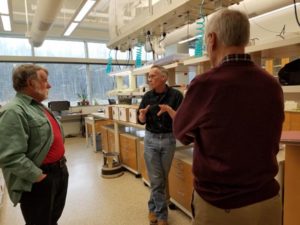
Visit to Smithsonian Environmental Research Center, Dr. Dennis Whigham, Jay O’Neill, Charles Hess
Thanks go to Jay O’Neill at the SERC who provided us with the orchid images from this site, stunningly photographed by Benjamin J. Crain from the first visit to the reserve in Palau. The photos serve as a reminder of the incredible diversity of orchids around the world. We are proud to be supporting the work of this organization through our conservation fundraising at our orchid shows.
![]()
